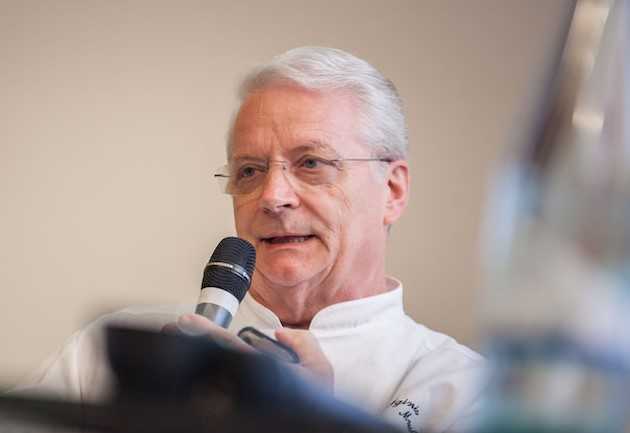MILAN — The world of confectionery communication, through storytelling and photographs. Two worlds, the experts are convinced, that have become mutually depedent on one another.
“If the product is not properly communicated, it’s as if you don’t have a product at all,” says the king of Italian pastry makers, Iginio Massari, who on the stage of World Pastry Stars added: “Pastry makers sell dreams” and dreams need to be recounted.
Because pastry is a product which, more than most, is particularly bound up with the emotions of childhood memories. So if the sector’s connotations are changing and evolving, so too must the way it is represented, also thanks to shifts in aesthetic canons and the arrival of social media.
An example is Roy Shvartzapel, who through his San Francisco baking company Panettone From Roy has made a success in the USA of the art of panettone-making, which he learned from Massari himself.
“It’s still an entirely artisanal production process, but sales are exclusively online.” The product and brand are closely identified with Shvartzapel himself, who is directly involved in a storytelling process that has made panettone a must-have product throughout the States, and now looks forward to bringing his venture to Italy.
Another successfully exported brand is Bubò, the creation of Carles Mampel, who took it from Barcelona to Japan, stopping off in Kuwait, Abu Dhabi and Dubai along the way.
“Creating a brand for export means having consistency, image, communication and a product range. To do that you need to keep on setting yourself apart from the rest. That’s also because what is today perceived as tradition was an innovation forty or fifty years ago.”
But the new forms that confectionery communication takes on also involves telling the story of where the ingredients come from.
“Having good ingredients is half the battle, then, if we are good at explaining that, the rest will follow,” says Guido Castagna, of Cioccolateria di Guido Castagna, Turin. He has led the way in choosing a language consistent with artisan values and product quality. Firstly with the case history of the new lease of life given to an ancient product, the “gianduiotto” chocolate – by innovating the way Piedmontese hazel nuts are processed; and then by creating and telling the story of “Guido Castagna’s Natural Method” for producing a sustainable chocolate, capable of following and respecting the slow pace of the natural world.
“Communication was indispensible in this case. So not just the product and its features, but a coordinated image, the restyling of the logo, the use of colour (a flavour for the entire palette of shades) and Italian-made boxes only.”
To say nothing, of course, of everything that appears on TV programmes, social media, websites and the books the Piedmontese pastry makers never tire of bringing out.


















